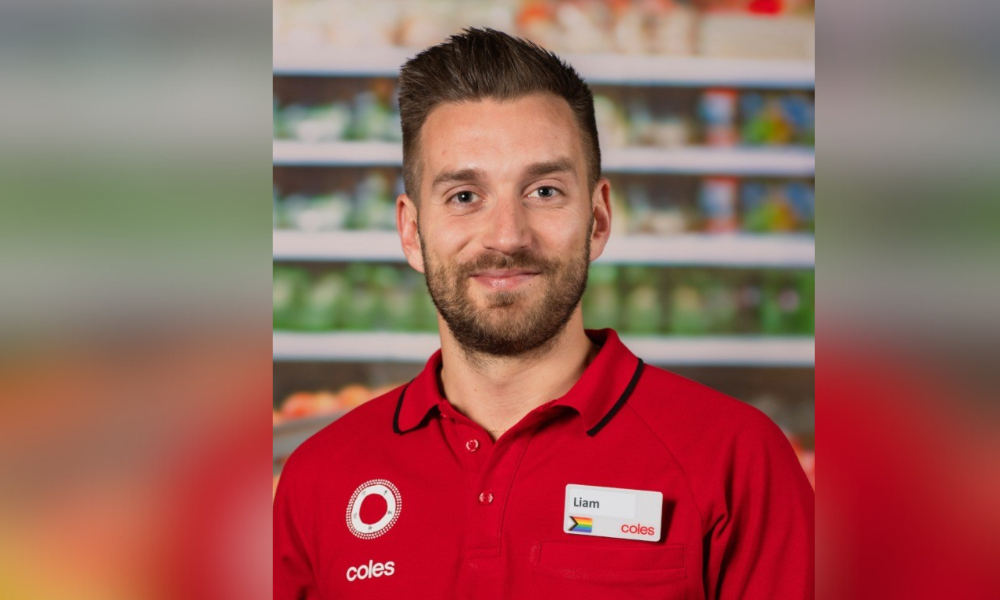
The supermarket giant turned around a recruitment merry-go-round thanks to data and 'uncomfortable' decisions

Back in 2022, Coles realised it had a problem, similar to other large employees, with high turn-over rates.
There was an urgent need to understand how it could optimise its processes to improve staff turnover and boost team member engagement. “It gets harder before it gets better, but as long as you know you’re doing the right thing – growth is substantial. You just need to make sure you have conversations with your line managers and staff,” Liam Mahon (pictured above), Head of People and Culture for Supermarket Operations at Coles Group, told HRD.
With almost half of its 120,000-strong workforce leaving each year and more than 45,000 new hires annually to try and fill the gaps, the supermarket giant faced mounting operational and financial pressure to create better engagement and “build careers.”
“The costs of all this really wasn’t sustainable – training, salary uniform costs. We realised that enough is enough and we had to make a change. We weren’t hiring for the need of the store and then overlaying preferences of staff, we were being too tunnel visioned, we needed to turn the dial,” Mahon added.
The cost of high turnover was highlighted in a recent PWC research study that found companies forking out more than $40,000 per new candidate to both retain and engage new staff.
These findings come from a survey of 1,800 Australian workers and found that 38 percent were considering leaving their current employer within the next 12 months.
For Coles, the first step was putting in place new systems and reducing recruitment.
"We told managers that 70% of their workforce needed to have their desired hours met before they could look at recruiting more staff. We got a lot of pushback, some stores were overworked, it was something we’d never done before," Mahon said.
Through this, Mahon outlined that Coles was able to reduce turnover by around six percentage points and ensure nearly 80% of employees’ desired hours are met across the whole workforce.
Mahon also noted the importance of data in both navigating change and ensuring buy-in from stakeholders.
“It tells a story for you – and when you’re trying to raise and issue or talk about how to reinforce the options available to you, data is the lynchpin in all of that. It makes people more engaged and empowered because they know exactly what’s going on.”
This kind of information, Mahon added, also clearly shows impact to the business – which is key.
“Data’s especially important when trying to get buy-in from execs and stakeholders – data is key in that conversation as it means you can walk hand-in-hand with people who can help navigate and implement your change,” he noted.
Mahon also emphasised the importance of greater collaboration between a business’ HR function and C-Suite to better manage change – highlighting that using the P&C function of a business can act as an enabler.
"It’s important that the senior people partners are in corporate planning and strategy sessions to understand where the business is going and what we're doing. Having a chief people officer on the executive leadership team reporting to the CEO positions us as a strategic enabler, not just a transactional function."
It’s not just aligning goals that is important, either, with Mahon outlining how their collaboration goes beyond business outcomes.
"We’ve structured P&C as strategic partners who coach and guide our C-suite and GMs - so we’re not only hearing the challenges when it is too late but translating them into actionable workforce strategies with our business leaders."
The benefit of this? Greater accountability during change.
The changes, Mahon concluded also leans into allowing a mobile workforce.
“We've got four different types of generations in our workforce and each comes with different expectations. We can’t assume people will stay in roles for decades like they used to."
By ensuring workers are better engaged – it eases the burden of trying to appeal to different people and, therefore, allows flexibility, career growth, and different job pathways.
“People want different things now. By using the data and ensuring we’ve got a workforce that is happy and flexible – you’re building an organisation people want to work for."
"In our stores, we want to skill up our teams for leadership roles that are customer-facing and impactful," Mahon acknowledged.
“It’s about engagement, effectiveness, and creating accounatble leadership roles that our team aspire to do in the future."